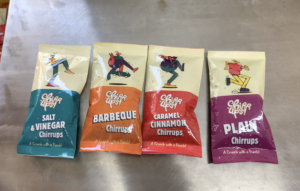
Cricket Farming: A growing trend in sustainable protein production
The practice of consuming edible insects is not new in Africa, but traditionally, it has been limited to specific communities.
In Kenya a young farmer, Talash Huijbers, took a bold step into the world of cricket farming, after extensive research on alternative protein sources. In 2018, she founded Insecti-Pro, a company focusing on insect cultivation for both organic fertilizer production and human consumption.

Huijbers, also the Chief Executive Officer of Insecti-Pro, emphasizes that, “nearly 2 billion people worldwide already consume insects, making it a promising market.”
The venture started with just two crickets, a male and a female, obtained from the International Center for Insects Physiology and Entomology in Kenya. Today, the company houses billions of crickets in stackable crates within a climate-controlled facility.
The advantages of cricket farming are manifold. Crickets are easy to raise and require minimal space, emitting fewer carbon footprints compared to traditional livestock. Rydon Vusisa, a cricket expert at Insecti-Pro, highlights their efficient feed conversion ratios, making the venture environmentally friendly and sustainable.

The climate-controlled facility at Insecti-Pro maintains optimal temperatures for cricket breeding, facilitating rapid growth.
“The facility is able to hold the crickets at optimum temperatures around 27-30 degrees Celsius whereby 30 is optimum for them to be able to grow and take that short time as opposed to when they are in a free-range, where they would take a longer time,’’ submits Dennis Waweru, a cricket farmer.

Female crickets can lay 300-400 eggs in two to three weeks. After 10 days, the crickets are transferred to feeding trays and harvested after five weeks. The harvested crickets are frozen, thawed, and baked for consumption.
Crickets are a rich source of protein, containing up to 73 percent. Huijbers notes that a daily intake of just 20 grams of crickets is sufficient to meet nutritional needs. Insecti-Pro currently offers three cricket protein products: Chirrup’s, a crunchy snack available in various flavors; PET, a cricket powder; and a porridge for feeding schemes.
Recognizing the challenge of selling whole crickets, Huijbers sees potential in cricket powder, which can be seamlessly incorporated into various dishes and drinks, appealing to a broader audience without highlighting the source.

Insecti-Pro collaborates with chefs to introduce cricket-based dishes, aiming to expand beyond Africa into the European market. However, administrative hurdles and paperwork currently pose challenges. But Huijbers is undeterred, she believes that an environmentally conscious generation will drive insect consumption in the future.
And encourages young farmers to embrace curiosity and innovation in agriculture. She sees innovation in terms of food production and climate as essential for creating a cohesive system that considers animals, plants, and insects.
Presently, Insecti-Pro generates nearly $2,000 worth of cricket products weekly, primarily sold online and through organizational orders. The company’s success marks a significant step towards establishing cricket farming as a sustainable and widely accepted alternative protein source.






